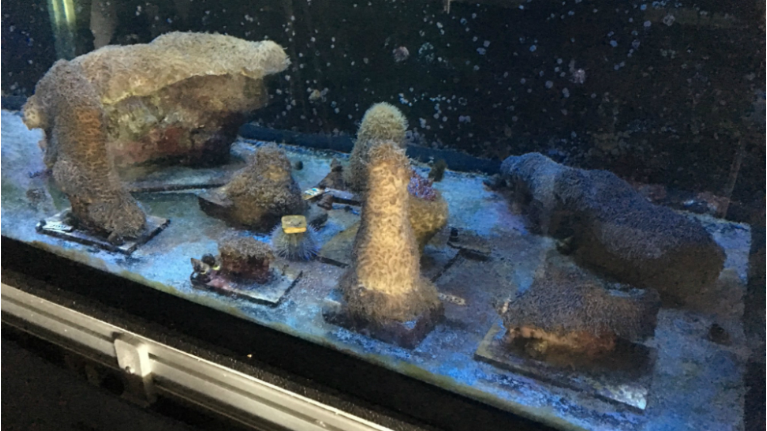TAMPA, Fla. — There has been a breakthrough in coral reef restoration.
- Florida Aquarium successfully spawns Atlantic pillar coral in lab
- LED technology, computer systems used to change environment
- Corals could be placed in ocean along Florida reef tract
The Florida Aquarium has successfully spawned Atlantic pillar coral in a lab. It is the first organization in history to do it successfully.
The effort has been years in the making with scientists putting in long hours to make it happen and collecting all the data they needed to mimic the coral's environment out in the ocean.
The research is referred to as Project Coral. It started at a museum in London where scientists spawned pacific coral.
In 2017, the Florida Aquarium partnered with them. And now they are celebrating successfully spawning this endangered species.
Workers used LED technology and computer systems to change the environment to mimic sunrises, sunsets and change the temperature of the water — all so that the coral could reproduce.
“By being able to keep these corals for many years and then spawn them in aquarium systems, this gives us the opportunity to create tens of thousands of corals to restore Florida’s coral reefs,” said Keri O’Neil the aquarium’s senior coral scientists.
The ultimate goal is to eventually put the new corals in the ocean along the Florida reef tract in areas that are deteriorating.
The focus will be on spots impacted by stony coral tissue loss disease - which is one of the major factors for why coral is endangered.
Other factors endangering coral reefs
With the Florida Aquarium’s first-of-its-kind research to save Florida's coral reef system, we wanted to find out why it's dying in the first place and why it's important for us to save it.
For years, scientists have pointed to warming waters and a changing climate as possible factors.
But just last month, a three-decades-long study published by Florida Atlantic University Professor Brian Lapointe found a main contributor to the decaying coral reef is actually the same thing that's causing blue-green algal blooms — high levels of nitrogen.
The study, conducted in the Florida Keys where the state's reef system runs, posited that the nitrogen was likely coming from runoff of poorly treated sewage, fertilizers, and topsoil from yards and farms.
Why does it matter?
But why are researchers spending so much time and money studying coral reefs?
Coral reefs are the cradles of marine habitats. As such, they support the state's vibrant fishing industry and provide a point of interest for eco-tourism.
Coral reefs may also provide opportunities to research the medicines of tomorrow.
In an article written for journal Issues in Science and Technology, coral reef ecologist Andrew Bruckner reports that almost half of medicines developed in the 1980s and 1990s came from natural land-based organisms. However, 80 percent of the planet's living organisms live in the ocean, representing enormous unrealized potential for breakthroughs.
"The prospect of finding a new drug in the sea, especially among coral reef species, may be 300 to 400 times more likely than isolating one from a terrestrial ecosystem," said Bruckner.



